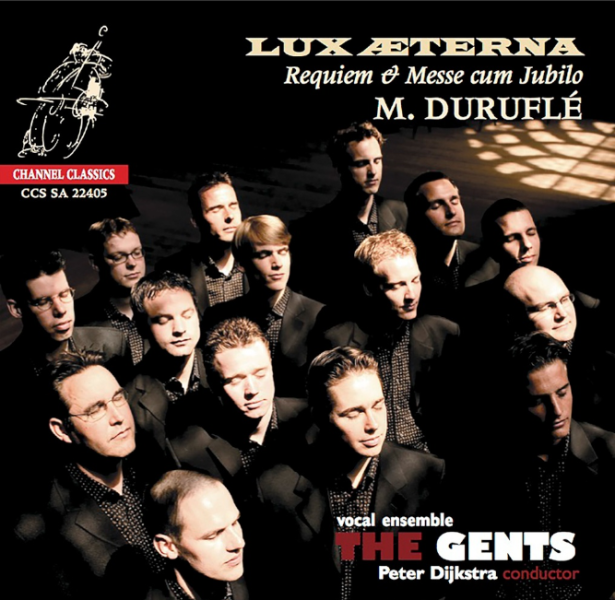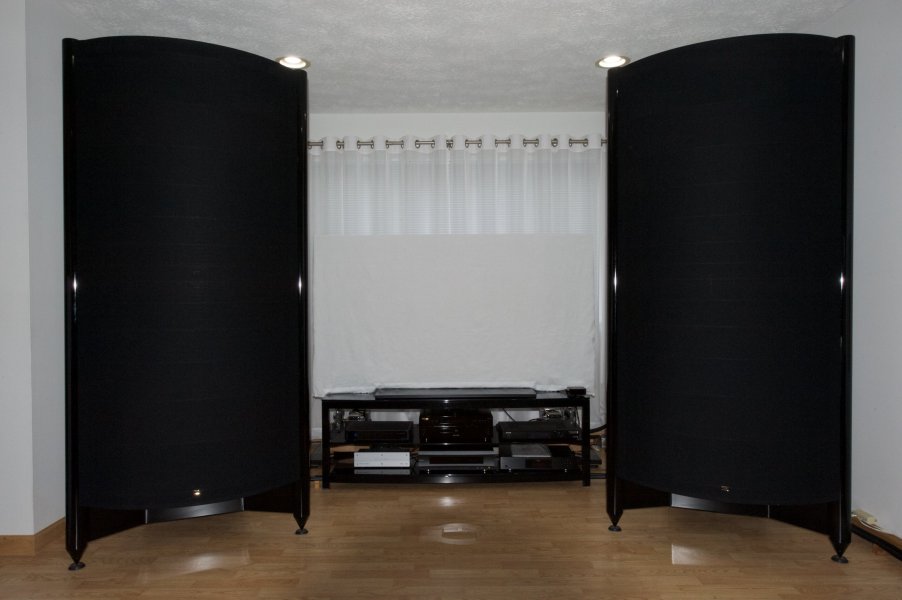Soundlab Audiophile G9-7c: a 30-year odyssey fulfilled
- Thread starter godofwealth
- Start date
You are using an out of date browser. It may not display this or other websites correctly.
You should upgrade or use an alternative browser.
You should upgrade or use an alternative browser.
I live in the San Francisco Bay Area. As a long-time researcher in AI, it's the Mecca for AI in the tech industry.
Hearing the lovely recording of Spanish renaissance composer Victoria on this Harmonia Mundi high res album through the ARC 750SEs. The Tenebrae Responsories were composed in 1585 and are to be heard over Easter weekend. Stile Antico’s voices sound superb through the massive 750SE’s. The separation between the chorus lines is better than with my Mola Mola. Each voice’s individual intonation comes through quite clearly. Yet there’s a sense of organic wholeness to the sound. The Bay Area is having a frost warning tonight as temperatures are dipping into the low 30’s Fahrenheit. Perfect weather to run the massive ARC 750SE’s without turning my living room into a sauna.


One of the greatest choral compositions of the 20th century has to be Maurice Durufle’s Requiem Mass composed in 1947. Performed here by The Gents with a 24-voice soprano accompaniment and an organ and cello, it’s a less symphonic and more chamber piece version of the original. I have the original Channel Classics SACD. Here I’m streaming the 24-bit 192khz high res stream. It sounds magnificent on the big SL’s played back through the majestic ARC 750SE’s. Recorded in a church in Germany, the recording has a nice ecclesiastical acoustic that suits the music well. The climaxes with the organ and voices in unison are really hard to reproduce without congestion. Here the huge power reserves of the 750SE shine. It doesn’t get easily fazed. Hard to believe that this was composed in France in 1947 just 2 years after World War 2 ended and the country was still in shambles. This week the legendary Notre Dame cathedral was reopened after a 5-year restoration from the fire that destroyed most of the church. The organ was spared but has to be painfully rebuilt, all 8000 pipes! Don’t know if they played the Durufle’ requiem, but I’d like to hear this piece in the Notre Dame.


I’m a huge fan of Frank Martin’s Choir for Double Mass, one of the 20th century’s most sublime choral masterpieces. Here is a beautiful recording of his setting of Tristan and Isolde, about as far from Wagner’s florid conceptualization as you can imagine. The work is given a more chamber piece like instrumentation and the chorus here sings superbly. The Harmonia Mundi recording, although limited to red book CD, is fabulous. On the big SL’s driven by the giant ARC 750SE’s, the sound is quite enchanting. Here then is a more cerebral Tristan and Isolde, not Wagner’s gaudy scoring, but a more intellectual one. Frank Martin shows his mettle in this piece as well. It’s 2 hours long, so only if interest to those who can keep their attention for longer than an average 5 minute Taylor Swift ballad. It’s a vanishingly small audience. But it’s there.
Frank Martin himself wrote at length on his creative process of composition and the reasons he write this piece. It’s fascinating to read into the mind of a great composer like him.

Frank Martin himself wrote at length on his creative process of composition and the reasons he write this piece. It’s fascinating to read into the mind of a great composer like him.
Le Vin herbé - Frank Martin
(Der Zaubertrank, The Magic Potion) Profane oratorio after ‘Le roman de Tristan et Iseut’ (1900) by Joseph Bédier
www.frankmartin.org

Last edited:
Here’s another lovely Frank Martin album from the German label MDG. I have a few of their SACDs, and their recordings are exemplary. This recording is being streamed in Redbook quality. The Swiss composer Frank Martin wrote in his own inimical style and this album is devoted to his string music and harpsichord concerto. The recording sounds magnificent on the big SL’s driven by the fire-breathing dragon, the ARC 750SE’s. DAC duties are fulfilled by my trusty Lampizator Pacific 1 with the tried and trusted KR 242 tubes. Olden but golden.


What’s remarkable about the fire-breathing dragon also known as the ARC 750SE is that the longer you run it, the better it sounds. It’s a magnificent monstrous 2400 watt per channel power consuming monster that should be downright illegal to use, like one of those high performance Lamborghini so favored by the crypto millionaires. Right now, my 750 SE’s have been steaming, nay cooking, for three hours. They’re reaching the point I’d like to call the singularity point, in recognition of the phrase au courant in AI when machines get smarter than humans. Ray Kurzweil and others like Altman argue we are within 2-3 years of machines achieving singularity. Well, it takes my ARC 750SE 3 hours to reach singularity. Once the 18 KT150 tubes per channel have cooked long enough, the sound takes on a mystic realm. It’s in the multiverse. Google today announced their breakthrough quantum computing chip named Willow that could solve a problem in a few minutes that would take the world’s fastest supercomputer a septillion years. That’s longer than the universe has existed. Well, my ARC 750 SE’s seem to gain their extra natural powers after 3 hours of broiling in their heat. Thankfully it’s 40 degrees Fahrenheit outside. Inside it’s still less than 70. And Frank Martin’s fabulous harpsichord concerto is sounding even more magical thanks to my singularity enabled 750 SE.

 blog.google
blog.google

Meet Willow, our state-of-the-art quantum chip
Our new quantum chip demonstrates error correction and performance that paves the way to a useful, large-scale quantum computer.
My fire breathing dragon, the ARC 750 SE. watch out, if you say Dracarys (Game of Thrones), it might explode in a shower of fireworks. Kids, look away. Not for the faint-hearted. But if you have the stomach for it, the best amplifier money can buy. It takes it three hours to reach liftoff. 18 KT150 tubes per channel. Don’t look at your power meter. This is insanity. But what crazy audiophiles do.


And we end our obsession tonight with the Swiss composer Frank Martin with a high res recording of his piano quintet. On the big SL’s, the fire breathing dragon, my ARC 750SE, sound sublime. The strings are rich, resonant and just so right. The piano for once is recorded at the right distance, thank heavens so one doesn’t feel like one’s head is buried inside the piano. The ARC 750SE don’t just reproduce the music, they command you to listen to it. What was Martin trying to express? What did he mean by this or that musical phrase? We are not in the world of hi fi anymore, a perhaps pedestrian enterprise compared with eternal musical truth. The instruments dance around each other in increasing agitation. Silence.


Gerry Mulligan has always exemplified the ideal of cool West coast jazz, not to be confused with the hyoerenergetic East coast jazz of John Coltrane or Miles Davis. This lovely compilation made 7 years before he died shows a musician fully in command of his talent and his legacy. The engineering is lovely and on the big SL’s driven by ARC 750SE dragons, the music has depth, passion and sensitivity. My favorite is the last track Etude for Franca which is so haunting a melody it can bring a tear to your eyes.


Here’s a great recording from 1957 of the meeting of two great minds in jazz: the cool West coast jazz of Gerry Mulligan with the sharp angular east coast jazz of Thelonious Monk. Who says oil and water don’t mix? These two legends make music together, one sounding his usual discordant self on the left channel (Monk) and Mr. Cool on the right (Mulligan). Like our brains divided into a logical rational part and an emotional part, sometimes it takes two asymmetric halves to make a symmetric whole. The 1957 recording shows its age in places but on giant SL’s driven by the humongous 750SE’s, you’re lost in the beauty of the music making.


One of the hardest tasks for a creative artist or scientist is how to create? Creation involves doing something different. If you want to write classical music today, you can hardly write like Mozart. Or even like Stravinsky. You need to find your own style. In jazz it’s the same. Jimmy Giuffre succeeded handsomely in this task. He innovated by creating jazz without having a drummer. Sacrilege. Every jazz recording, it seems, needs to have a drummer. Jimmy thought differently. He played the clarinet and sought out sympathetic accompaniments without a drummer, here a double bass and a guitar. His recordings are not typical jazz fare. They’re cerebral jazz. He’s always exploring and finding his way in every piece. Your hear his mind working. It’s a beautiful recording like many of his. It’s a great pleasure to hear Jimmy on the large Soundlab G9-7c’s driven by the mighty ARC 750SE’s. It’s a typical left right hard panned jazz recording. But highly enjoyable even given its age.


What better way to end another musical evening than to listen to one of jazz’s greatest recordings featuring the geniuses tenor saxophonist John Coltrane and vibraphonist Milt Jackson. This recording of Bags and Trane I’ve heard thousands of times. I have the original vinyl mono version. But I’m playing the stereo high resolution 24-bit 192khz remastering. The opening track features Coltrane’s soaring tenor sax floating outside the extreme left into outer space far outside the left channel. It’s perhaps one of the most magical moments in recorded jazz. Milt is recorded on the extreme left. The double bass is lumped along with Coltrane, the drum kit with Milt. Classic left-right jazz recording. But who cares when the musicians are of this order of genius. I could listen to this album on a boombox and be captivated. But on the giant SL G9-7c’s, you’re in the room where the recording is happening, Rudy Van Gelder’s parent’s house in Hackensack, NJ, the most famous recording venue in jazz history. The ARC 750SE turn this recording into an event that you’re privileged to eavesdrop on.


Wow, that's amazing to see they are continuing to function property after 30+ years. Did you have to upgrade the panels at any point? Quicksilver makes very nice and affordable amplifiers. Their factory is not far from my house, about 1.5 hours away. I've owned several of their amplifiers, and currently have their smaller 8417 amplifier.I have owned Ultimate One speakers since 1993 and I drive them with a pair of Quicksilver 120 mono amps and it is a heavenly match.View attachment 141339
Hi I did update the panels to the bass focus version a few years ago and they are the 90 degree speakers. I paid $4800 for the mono 120 amps new and they drive the speakers very well from rock to female vocals, jazz, classical you name it the Quicksilvers just perform great. I am also using a Convergent Audio Technology Legend preamp to drive the amps.
Great to hear. I might get another pair of higher-powered Quicksilvers. I think my 8417s are only about 40 watts per channel, and they're quite old, so one of them hums a bit. Mike said that happens as the transformers age. The CAT is a legendary preamplifier, and it has also stood the test of time for a long time. It went through a few iterations, as I recall.
Like Gary, I also have owned Ultimate One speakers since 1993 updating them over the years as the panels and backplates improved and culminating a few years ago with the latest Bass Focus version but
in the 8 foot version.
Thanks for such a wonderful thread, you've quite a breadth of musical knowledge and have enjoyed reading the background on the various works posted. Keep them coming!
John
in the 8 foot version.
Thanks for such a wonderful thread, you've quite a breadth of musical knowledge and have enjoyed reading the background on the various works posted. Keep them coming!
John

Last edited:
Back to music. John Coltrane recorded a sequence of highly regarded albums for Atlantic Records in 1960, his annus mirabilis. Perhaps the most popular one is My Favorite Things. But my personal favorite is Coltrane Plays the Blues. A bit of a misnomer since Coltrane is a hard driving jazz musician whose style is not all that conducive to the blues. But here he surprises us with the level of melancholy he produces in song after song. A level of wistfulness creeps into his playing and he’s clearly enjoying his foray into this genre. This lovely recording has been remastered in 24-bit 192khz format and indeed sounds gorgeous on the big SL’s. The imaging is classic jazz, hard left and right mostly. But that’s par for the course for these early jazz recordings. Many were recorded and released in mono vinyl, and later remixed into stereo. I have the collection that Atlantic recently reissued called John Coltrane in Mono on a vinyl box set. A saxophone is a hard instrument to reproduce, particularly when you have someone with pipes as powerful as Coltrane. He has this tendency to go discordant as he’s constantly pushing his instrument to the limit of its capabilities. One gets the feeling that much as a sculptor molds his creation by chiseling marble, Coltrane is chiseling away on his saxophone trying to get at the composition from different vantage points. He arrives at his musical truth after thoroughly exploring all the angles and musical expressions. It’s fascinating to hear him at work in this album.


Similar threads
- Replies
- 0
- Views
- 728
- Replies
- 4
- Views
- 951
- Replies
- 10
- Views
- 1K
- Replies
- 3
- Views
- 854
| Steve Williams Site Founder | Site Owner | Administrator | Ron Resnick Site Owner | Administrator | Julian (The Fixer) Website Build | Marketing Managersing |














